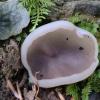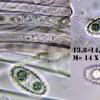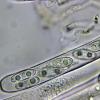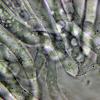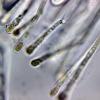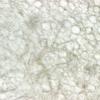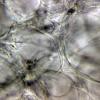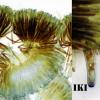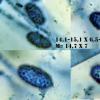
30-11-2025 12:53
 Edvin Johannesen
Edvin Johannesen
White short-stipitate apothecia found on thin twig

30-11-2025 10:47
 William Slosse
William Slosse
I recently found a collection of small Peziza sp.

27-11-2025 12:01
Thomas Læssøehttps://svampe.databasen.org/observations/10496727

27-11-2025 11:46
Thomas Læssøehttps://svampe.databasen.org/observations/10493918

17-09-2025 10:50
Heather MerryleesHi there!I am hoping for any advice on the identif

29-11-2025 08:40
 Andreas Millinger
Andreas Millinger
Hello,on a splintered part of a branch on the grou

28-11-2025 16:45
Nogueira HéctorNovember 23, 2025 Requejo de Sanabria (León) SPAI

25-11-2025 14:24
Thomas Læssøehttps://svampe.databasen.org/observations/10490522

27-11-2025 15:41
Thomas LæssøeSpores brownish, typically 4-celled; 26.8 x 2.4;

27-11-2025 11:31
Thomas LæssøeCollectors notes: Immersed ascomata, erumpent thro
Peziza violacea
Castillo Joseba,
15-06-2021 22:44
No tiene latex
A ver si hay alguna sugerencia
Saludos
Joseba
Mirek Gryc,
16-06-2021 08:47
Re : Peziza violacea
Dear Joseba
With a peziza with a blue hymenium color, so far there are big problems, thanks to Nicolas and other people, there are slightly fewer secrets but still require a lot of work.
Your apothecia is poorly mature so I suspect that the dimensions of spores are smaller than they should be.
I met a similar collection which could not be identified. I will put it in my atlas under the working name "Peziza Sp. (2020.07.12)" ... If you want this compare:
https://grzyby-pk.pl/gat_p/gat_peziza_20200712.php
Maybe Nicolas Something more suggest, I'm also curious about his opinion:?
Mirek
With a peziza with a blue hymenium color, so far there are big problems, thanks to Nicolas and other people, there are slightly fewer secrets but still require a lot of work.
Your apothecia is poorly mature so I suspect that the dimensions of spores are smaller than they should be.
I met a similar collection which could not be identified. I will put it in my atlas under the working name "Peziza Sp. (2020.07.12)" ... If you want this compare:
https://grzyby-pk.pl/gat_p/gat_peziza_20200712.php
Maybe Nicolas Something more suggest, I'm also curious about his opinion:?
Mirek
Nicolas VAN VOOREN,
16-06-2021 11:37

Re : Peziza violacea
Two important characters are required:
- type of amyloid reaction of asci
- spore ornamentation (view in Cotton Blue)
- type of amyloid reaction of asci
- spore ornamentation (view in Cotton Blue)
Mirek Gryc,
16-06-2021 14:58
Re : Peziza violacea
Hi Nicolas
I do not know much about peziza, so I wanted to ask you one question. You pay a lot of attention to the nature of the iodine reaction. Do you share species to groups on the basis of this reaction? If so, could you say something more about this?
I do not know much about peziza, so I wanted to ask you one question. You pay a lot of attention to the nature of the iodine reaction. Do you share species to groups on the basis of this reaction? If so, could you say something more about this?
I have never paid attention to this although I have recently noticed that the reaction to the iodine in some collections differed depending on the age of Ascomata. Furthermore, in autumn I had a few cases where the reaction did not occur in some ascomata and they were certainly of the genus Peziza.
greetings
Mirek
Enrique Rubio,
17-06-2021 09:51
Re : Peziza violacea
I wanted to ask Nicolas another question: do you use Melzer's reagent or IKI (Lugol) to evaluate the asci reaction?
Enrique
Enrique
Castillo Joseba,
17-06-2021 14:37
Mirek Gryc,
17-06-2021 15:43
Re : Peziza violacea
Now you can see exactly ornamentation :)
A very thick ornamentation in the form of more regular warts, so this will not be the same species as for me.
In my opinion, ornamentation more close to P. celtica, although the dimensions of the spores are too small. However, these species are still problematic, Nicolas mentioned it.
Interesting these blue Peziza :)
Mirek
A very thick ornamentation in the form of more regular warts, so this will not be the same species as for me.
In my opinion, ornamentation more close to P. celtica, although the dimensions of the spores are too small. However, these species are still problematic, Nicolas mentioned it.
Interesting these blue Peziza :)
Mirek
Nicolas VAN VOOREN,
18-06-2021 18:49

Re : Peziza violacea
About the amyloid reaction, here is what I wrote in my paper published in 2020 about new genera in Pezizaceae:
"The amyloid reaction of asci, i.e. staining in blue in contact with an iodine reagent, is not identical in the Pezizaceae. Species of some genera have lost this character (HANSEN et al., 2001), species of some other genera have species show an inconstant reaction, e.g. Marcelleina with M. pseudoanthracina (DOUGOUD, 2002), and some species show a distinct amyloid reaction but the reaction pattern is variable. It is important to note that this reaction is sometimes difficult to observe when the reaction is faint or not concentrated at the top of asci. In many cases, examination of dehiscent asci allow observation of the reaction on the walls. In some rather rare samples, the reaction seems to be missing, probably because of external factors.
PFISTER (1973) discussed the amyloid reaction of Pachyella species: "In Pachyella species, the amyloid material is present either as an external layer on the ascus wall (which may separate from the ascus wall proper), or occurs in the gel which surrounds the asci and paraphyses and is not restricted to the wall. Since the reaction is not restricted to the apex of the ascus, nor is it in the form of a J+ ring at the apex of the ascus as in Peziza, the reaction in Pachyella is said to be diffuse." This character was evaluated by HANSEN et al. (2001) who identified four different types of known amyloid reaction."
I restricted these patterns to 3 under the codes:
. W: homogeneous reaction on wall, over the entire length of ascus.
. WT: weak reaction on wall, more intense at the top but with no obvious distinct ring.
. WTR: weak reaction on wall, only intense at the top with a distinct ring.
@Enrique: I didn't note any difference between Lugol or Melzer.
The WTR type is characteristic of the /peziza lineage, including the genera Peziza s. str., Geoscypha, Daleomyces and Malvipezia. Joseba's collection shows a WTR reaction.
The hymenial colour and biguttulate ascospores exclude the genus Peziza s. str., so it belongs to one of the other genera where violet species are common. Among the species that looks like this collection and having warted ascospores, we have :
- Daleomyces exogelatinosus: ascospores 15–18 × 8–9,5 (–10) µm, finelly verrucose
- Daleomyces brunneoviolaceus (nom. prov.): asci without croziers
- Malvipezia howsei and M. emileia have larger ascospores
- Geoscypha tenacella (a carbonicolous species) has shorter ascospores and curved paraphyses
So I don't know how to name your collection.
"The amyloid reaction of asci, i.e. staining in blue in contact with an iodine reagent, is not identical in the Pezizaceae. Species of some genera have lost this character (HANSEN et al., 2001), species of some other genera have species show an inconstant reaction, e.g. Marcelleina with M. pseudoanthracina (DOUGOUD, 2002), and some species show a distinct amyloid reaction but the reaction pattern is variable. It is important to note that this reaction is sometimes difficult to observe when the reaction is faint or not concentrated at the top of asci. In many cases, examination of dehiscent asci allow observation of the reaction on the walls. In some rather rare samples, the reaction seems to be missing, probably because of external factors.
PFISTER (1973) discussed the amyloid reaction of Pachyella species: "In Pachyella species, the amyloid material is present either as an external layer on the ascus wall (which may separate from the ascus wall proper), or occurs in the gel which surrounds the asci and paraphyses and is not restricted to the wall. Since the reaction is not restricted to the apex of the ascus, nor is it in the form of a J+ ring at the apex of the ascus as in Peziza, the reaction in Pachyella is said to be diffuse." This character was evaluated by HANSEN et al. (2001) who identified four different types of known amyloid reaction."
I restricted these patterns to 3 under the codes:
. W: homogeneous reaction on wall, over the entire length of ascus.
. WT: weak reaction on wall, more intense at the top but with no obvious distinct ring.
. WTR: weak reaction on wall, only intense at the top with a distinct ring.
@Enrique: I didn't note any difference between Lugol or Melzer.
The WTR type is characteristic of the /peziza lineage, including the genera Peziza s. str., Geoscypha, Daleomyces and Malvipezia. Joseba's collection shows a WTR reaction.
The hymenial colour and biguttulate ascospores exclude the genus Peziza s. str., so it belongs to one of the other genera where violet species are common. Among the species that looks like this collection and having warted ascospores, we have :
- Daleomyces exogelatinosus: ascospores 15–18 × 8–9,5 (–10) µm, finelly verrucose
- Daleomyces brunneoviolaceus (nom. prov.): asci without croziers
- Malvipezia howsei and M. emileia have larger ascospores
- Geoscypha tenacella (a carbonicolous species) has shorter ascospores and curved paraphyses
So I don't know how to name your collection.
Nicolas VAN VOOREN,
18-06-2021 18:51

Re : Peziza violacea
@Mirek: ornamentation of P. celtica is different.
Castillo Joseba,
18-06-2021 19:53
Re : Peziza violacea
Muchas gracias a todos , ha sido interesante leeros
Joseba
Joseba
Enrique Rubio,
19-06-2021 07:53
Re : Peziza violacea
Thanks a lot, Nicolas.
Enrique
Enrique
